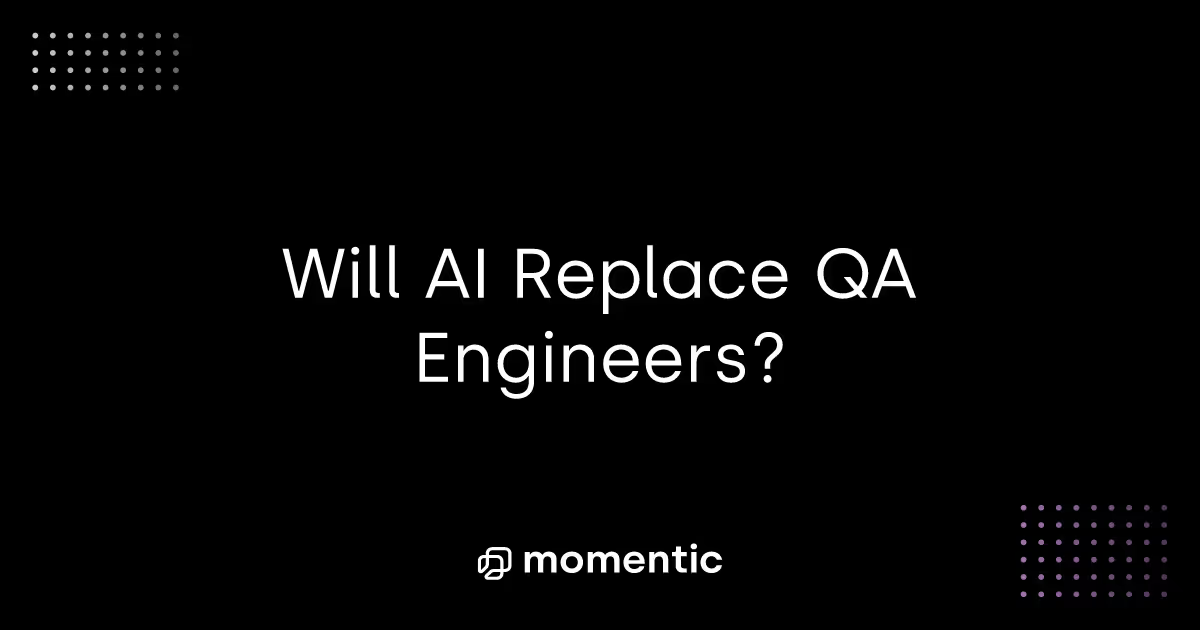Are testing bottlenecks stopping you deploying code with the frequency you'd like, despite all your perfectly implemented CI/CD best practices?
If you're using a traditional, over-the-wall QA testing plan, this is likely the reason why.
That huge document written in isolation from your engineering team is unwieldy, difficult to update, and frequently suggests over-optimistic testing schedules -it doesn't work anymore and has to go.
The traditional testing plan is on its way out. We can't imagine this news will be met with too many tears (from either engineering or QA teams) - but if you're wondering what to do instead, you're in the right place.
Here's why your QA test plan isn't working, and how you can replace it.
What Does A Traditional QA Test Plan Look Like?
Typically, a test plan for over-the-wall QA would be drawn up after a project's requirements have been finalized and before development is complete. This gives QA teams enough time to prepare everything they need to test the code.
Here's a high-level test plan template that demonstrates how much work these are to put together:
Long, cumbersome, and inefficient? Absolutely - it's out of step with how we approach product development in 2025 and no longer fit for purpose.
Why The Traditional QA Test Plan Doesn't Work Anymore
1. QA Test Plans Are Too Slow
If you're looking for lean QA processes that test accurately at speed, you need to move away from over-reliance on lengthy, rigid deliverables that slow things down.
Thinking strategically about your approach to testing is a good thing. Having to formulate and structure these thoughts into a wordy document with an extensive sign off list is a waste of everyone's time -especially when you need to release code faster than ever before to stay ahead of the game.
And, as anyone with any experience managing stakeholder sign-offs will tell you, expect a few frustrating discussions about everything from things that definitely were never in scope to minor grammar points.
2. QA Test Plans Are Inflexible
We've mostly done away with Waterfall methodology, but old-school software testing plans seem to have hung around for an unwelcome amount of time.
Starting to build your software testing plan after requirements, with limited to no input from your engineering team, is completely incompatible with the fundamental Agile principle that requirements change and evolve - even if you write separate testing plans for each sprint.
It's no wonder that testing is still a major bottleneck for teams that otherwise work pretty effectively.
3. QA Test Plans Promote Silos Across Your Organization
Engineers typically aren't involved much in test plan creation. They are there to write the code, and the QA team is there to test it.
This division can be extremely dangerous to the quality of the code you create, and your ability to release code on the schedule you have planned. Separating QA and engineering teams reduces communication and builds knowledge silos, so that:
- QA isn't informed of project updates in good time - so the test plan doesn't reflect them.
- Engineers don't own ' their code, so write code that's difficult to test.
- QA teams don't know enough about the codebase to test it effectively.
The Alternative to a Traditional QA Test Plan
Modern test strategies should be dynamic, flexible, and quick to execute. With the right approach, lean QA processes can be a major strategic advantage for your organization.
To achieve this, the traditional QA test plan has to go. There are other, more effective ways of structuring your testing that increase agility, reduce documentation bloat, and keep your engineering, product, and QA teams all on the same page.
Shift Left Testing
What it is: an early and often' testing approach that fully integrates engineering and QA.
How it works: QA and testing processes run at the same time as development. This test-as-you-go approach identifies bugs early, when they are easiest (and cheapest) to fix, eliminating testing bottlenecks at the end of the development process.
QA teams are fully involved in design and development discussions, with test scenarios created alongside stories, or as part of acceptance criteria.
Agile Test Strategy
What it is: a lightweight live doc that QA, engineering, and product teams maintain jointly. It evolves sprint by sprint.
How it works: an Agile Test Strategy outlines a high-level test approach for each release. Test planning in Agile requires adaptability - so there are no detailed test case docs upfront. This ensures testing teams can keep pace with rapidly changing requirements and adapt their testing approach accordingly.
Risk-Based Test Matrix
What it is: a spreadsheet or quadrant mapping high-risk and low-risk development areas.
How it works: A risk-based test matrix offers immediate insight into testing priorities, helping QA and engineering teams remain on the same page. It's atop-level approach that works as a test plan alternative for startup or lean product teams, limited resource environments, or where teams are working with Minimum Viable Testing.
AI Takes The Work Out of Planning Your QA Testing
Imagine there was a little robot that worked alongside your engineers completely autonomously, using machine learning and vast datasets to optimize your entire testing lifecycle.
That's almost exactly how AI tools work right now. We can't promise you any physical robots - but we can give you virtual AI agents. These are digital coworkers that work on their own, without input from rules-based software tools. Less fabulously futuristic than actual androids? Probably - but you'd have had a hard time getting the hardware spend past finance anyway.
AI agents can carry out tests, suggest improvements of their own accord, adapt tests to changing scenarios, and optimize their testing approach over time. This makes them the perfect test planning partner - they're your shortcut to build relevant, useful testing procedures that aren't bound by step-by-step execution.
How Else Does AI Testing Helps Plan Software Testing?
AI's Speed Increases Test Coverage
Resource management can be a contentious issue for QA teams. You can't test everything, so you need to identify which parts of the project are of highest priority - rest assured that each stakeholder will have very strong opinions about which these should be.
Why take all this time deliberating over testing priorities when an AI testing tool could dramatically expand your testing coverage with minimal human input? AI slashes the time it takes to write scripts thanks to natural language processing and completes tests far faster than your human QA engineers ever could.
More of your codebase tested. A better quality product. Fewer stakeholder signoff meetings spent in deadlock. All good things.
24/7 Test Cycles Shorten Feedback Loops
The ultimate goal of QA should be to guarantee software quality and identify defects at a speed that keeps pace with your release schedule.
Removing human, external QA from the equation entirely helps you achieve this. You shift your testing left, with engineers testing the code they write using AI enabled tools. These AI test suites can be triggered on code commits, run complex integration tests across multiple environments, and provide immediate feedback to developers.
As well as resulting in better code and saving money on slow, inefficient human QA, this creates a 24/7 testing cycle that supports your release schedule, rather than defines it.
Momentic: For Fast, Modern, Accurate QA
Momentic makes it 3x faster for our team to write and maintain end to endtests.
Alex Cui, CTO, GPTZero
We'd love to see if Momentic's AI testing tools could help your engineers minimize the time spent on test planning and maximize test coverage, speed, and accuracy.
If, like Alex and his team, you're keen to save over two thirds of the time you spend on key testing processes, why not schedule a conversation with our team?


